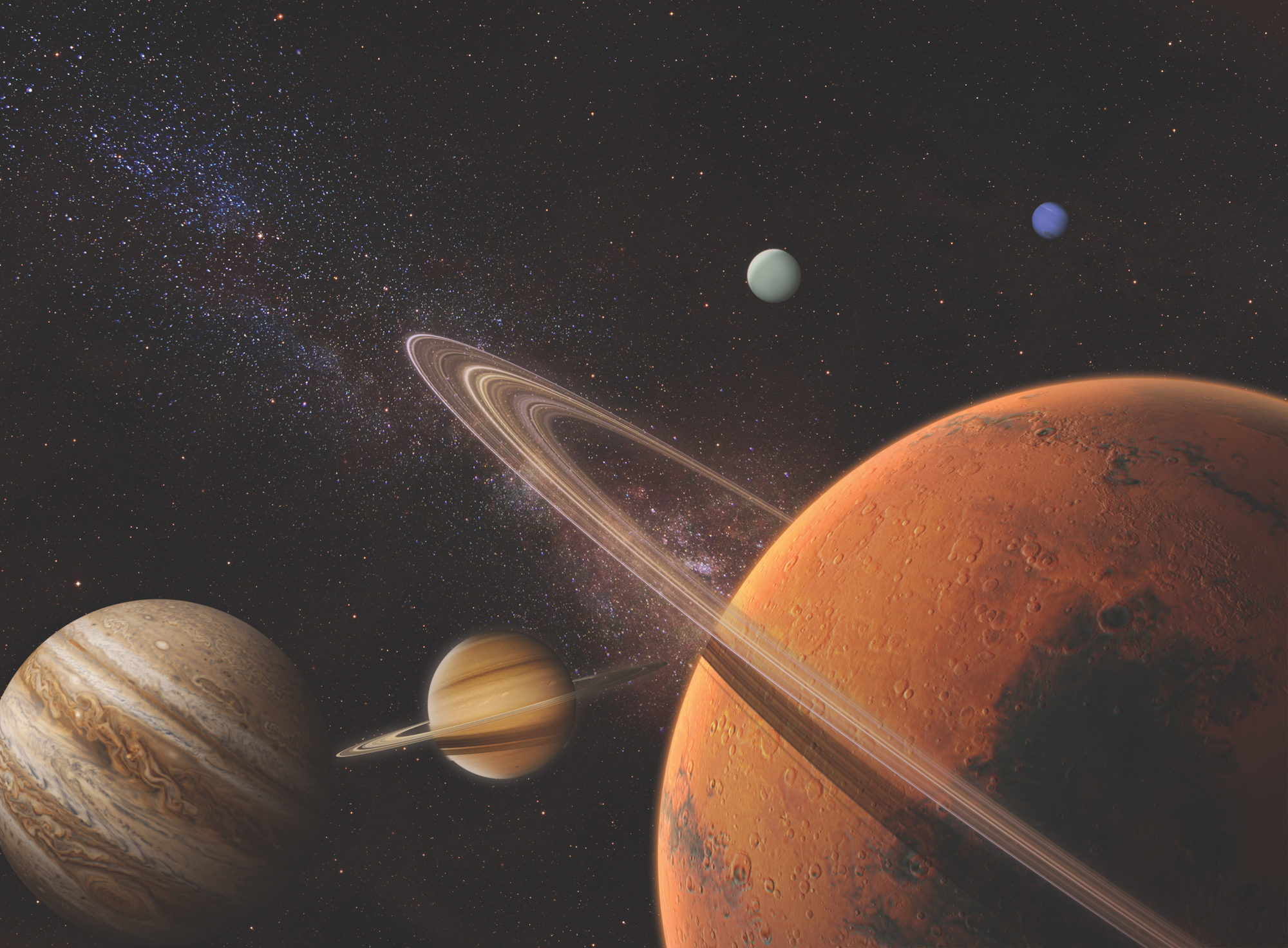Martian moon's orbit suggests the Red Planet had a ring

A cycle of moon formation could explain the slightly tilted orbit of Mars' moon Deimos.
Mars has two moons circling the planet, called Phobos and Deimos. For many years, scientists supposed that both of these moons were captured asteroids, or space rocks. But new research shows the orbit of Deimos would not make that possible.
Deimos is very slightly tilted to the Martian equator, by only two degrees. Initially, the difference was so small that many scientists overlooked the matter.
Related: Moons of Mars: Amazing Photos of Phobos and Deimos
"The fact that Deimos' orbit is not exactly in plane with Mars' equator was considered unimportant, and nobody cared to try to explain it," study lead author Matija Cuk, a research scientist at the SETI Institute, said in a statement. "But once we had a big new idea and we looked at it with new eyes, Deimos' orbital tilt revealed its big secret."
The secret came from looking at the motions of Phobos, which orbits closer to the Martian surface and is slowly spiraling into the planet. Eventually, Phobos will drop so close to Mars that the gravity of the much larger planet will pull the moon into pieces — forming a ring.
Study co-authors David Minton, a professor at Purdue University, and Andrew Hesselbrock, who was his graduate student at the time of the research, suggest that Phobos' future is not a one-off event. Instead, after the moon is pulled apart, eventually the pieces will reform into another moon. This not only will happen to Phobos, but has happened already other times in the Martian past.
Breaking space news, the latest updates on rocket launches, skywatching events and more!
This breaking up and reforming of moons would in turn explain how Deimos' orbital tilt happened.
Related: A moon of Mars may have once been rings (& might be again)

"This cyclic Martian moon theory has one crucial element that makes Deimos’ tilt possible: a newborn moon would move away from the ring and Mars ... in the opposite direction from the inward spiral Phobos is experiencing due to gravitational interactions with Mars," the SETI Institute said in the statement.
"An outward-migrating moon just outside the rings can encounter a so-called orbital resonance, in which Deimos' orbital period is three times that of the other moon," the institute added. "We can tell that only an outward-moving moon could have strongly affected Deimos, which means that Mars must have had a ring pushing the inner moon outward."
This theoretical outward-moving moon would have been huge, at 20 times more massive than Phobos. Phobos is theorized to be two generations younger than this moon, which broke up and reformed twice — the second time forming Phobos. Also, the age of Phobos favors the theory. Deimos is billions of years old, but Phobos is as young as 200 million years old — meaning it formed when dinosaurs roamed the Earth.
So far, no spacecraft has been able to get up close to either Martian moon to test geological theories, but that could change soon. The Japanese Aerospace Exploration Agency (JAXA) plans to send a mission to Phobos in 2024, called Martian Moons Exploration (MMX). If all goes to plan, MMX will pick up a sample from Phobos to return to Earth.
"I do theoretical calculations for a living, and they are good, but getting them tested against the real world now and then is even better," Cuk said in the statement.
The research was presented at the 236th meeting of the American Astronomical Society, held virtually until June 3. A paper based on the work has been accepted for publication in Astrophysical Journal Letters.
- Did the solar system's planets have rings before moons?
- Mars may become a ringed planet someday
- Mars moon double-take: What would Martian skywatchers see?
Follow Elizabeth Howell on Twitter @howellspace. Follow us on Twitter @Spacedotcom and on Facebook.

Elizabeth Howell (she/her), Ph.D., was a staff writer in the spaceflight channel between 2022 and 2024 specializing in Canadian space news. She was contributing writer for Space.com for 10 years from 2012 to 2024. Elizabeth's reporting includes multiple exclusives with the White House, leading world coverage about a lost-and-found space tomato on the International Space Station, witnessing five human spaceflight launches on two continents, flying parabolic, working inside a spacesuit, and participating in a simulated Mars mission. Her latest book, "Why Am I Taller?" (ECW Press, 2022) is co-written with astronaut Dave Williams.
